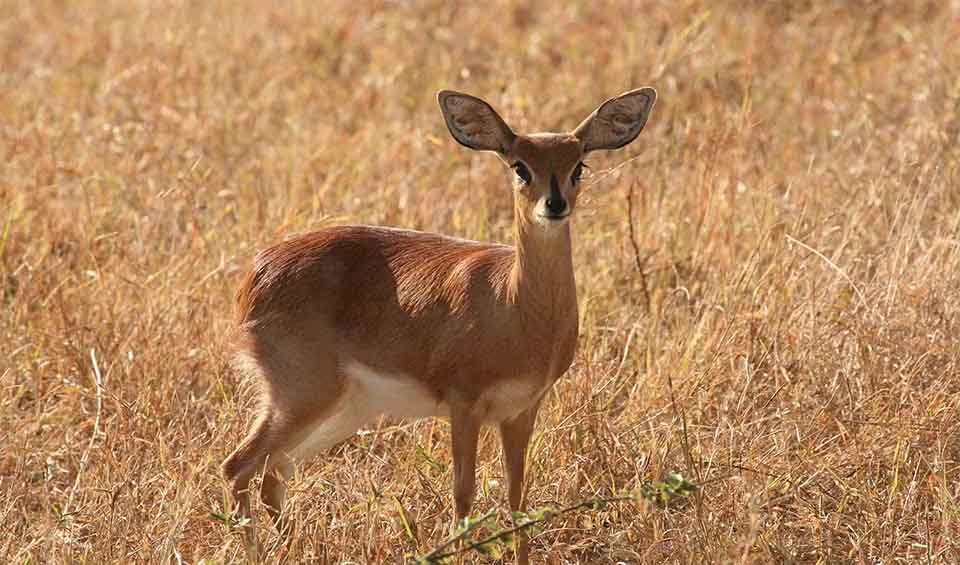One of the most striking features of the Steenbok is its beautiful russet-colored coat, which provides excellent camouflage against the backdrop of the savanna and bushveld. This natural concealment is crucial for its survival, allowing it to blend into the environment and evade the notice of predators. The contrast of its white underbelly adds to its delicate appearance, creating a visual distinction that is both functional and aesthetically pleasing. This coloration helps regulate body temperature by reflecting sunlight and serves as a warning signal to other Steenbok when fleeing from danger.
The males of the species are distinguished by their slender, straight horns, which, although not used for digging or fighting as in some other antelope species, serve as a significant marker of sexual dimorphism. These horns add to the overall elegance of the Steenbok, enhancing its silhouette against the African landscape. Despite their appearance, these horns are robust and can be a formidable tool when necessary.
Agility and speed are among the Steenbok’s most remarkable traits. This antelope can execute sudden, bounding leaps and darting runs, maneuvers essential for escaping predators in an environment where cover can be sparse. Their small size enables them to make quick turns and dashes that larger animals cannot, making them elusive targets. This agility is complemented by their keen senses—sharp vision, acute hearing, and a sensitive sense of smell—which collectively play a vital role in their survival strategy, allowing them to detect predators from a distance and react swiftly.
Beyond their physical attributes and survival tactics, Steenboks exhibit fascinating behavioral adaptations. They are primarily solitary animals, with individuals occupying and defending territories. These territories are marked by secretions from preorbital glands located near their eyes and by dung middens, which serve as both a territorial marker and a communication tool between individuals. The Steenbok’s diet is as adaptable as its behavior; it feeds on various plants, including leaves, shoots, and fruits, and has been observed engaging in geophagy—eating soil to supplement minerals.
Distribution
 Angola
Angola Botswana
Botswana Eswatini
Eswatini Kenya
Kenya Lesotho
Lesotho Official estimate
Official estimate
 Mozambique
Mozambique Namibia
Namibia South Africa
South Africa Tanzania
Tanzania Zambia
Zambia Zimbabwe
ZimbabweAnything we've missed?
Help us improve this page by suggesting edits. Glory never dies!
Suggest an editGet to know me
Terrestrial / Aquatic
Altricial / Precocial
Polygamous / Monogamous
Dimorphic (size) / Monomorphic
Active: Diurnal / Nocturnal
Social behavior: Solitary / Pack / Herd
Diet: Carnivore / Herbivore / Omnivore / Piscivorous / Insectivore
Migratory: Yes / No
Domesticated: Yes / No
Dangerous: Yes / No




